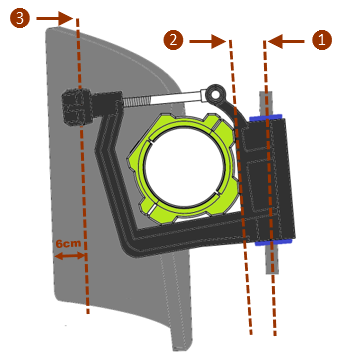
De blade pitch is the sum of the resultante of the two pin pitches (1), the angles of the adjusting bushes (2) and the oar pitch (3)
| Stellen: | The blade pitch can only be set by setting one or more of the following angles, namely the:
|
 |
Oar pitch |
 |
Distance through the work |
This article was translated automatically and is provided to you for free. You are most welcome to improve it!












 Stern pitch oarlock pin
Stern pitch oarlock pin